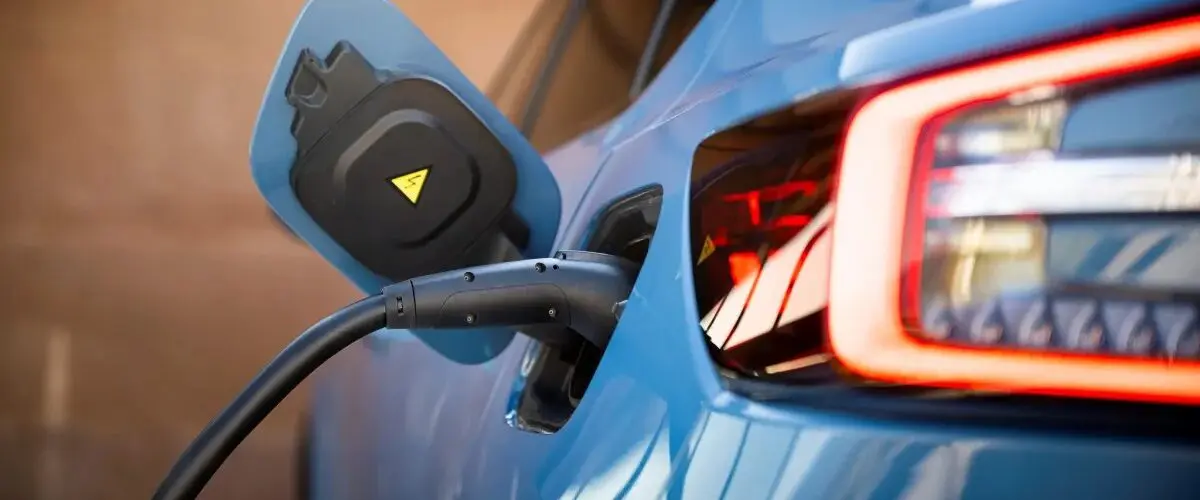Connecticut electric vehicle rebate reforms include point-of-sale vouchers
Connecticut’s electric vehicle rebate program is about to undergo an expansion and overhaul, one that will place a higher priority on equity.
The reforms are part of the omnibus Connecticut Clean Air Act approved by lawmakers in the session that ended last week. Gov. Ned Lamont signed the bill into law Tuesday.
The legislation significantly expands funding for the program, called the Connecticut Hydrogen and Electric Automobile Purchase Rebate, or CHEAPR. It currently receives the first $3 million in greenhouse gas reduction fees paid every year on car registrations. As of July 1, all of those fees will be directed to the rebate program, boosting funding by as much as another $5 million annually.
CHEAPR offers rebates of $750 to $2,250 on the purchase of battery-electric vehicles and plug-in hybrid electric vehicles. Higher incentives are available for fuel cell electric vehicles.
Beginning last year, the program began offering an additional rebate of $1,500 to $2,000 to lower-income residents, as determined by their participation in a state or federal income-qualified program. Income-qualified residents are also eligible for rebates on used electric vehicles.
But very few low-income residents have applied, said Barry Kresch, a leader of the EV Club of Connecticut. One barrier is that, unlike the standard rebate, the lower-income incentives are not immediately credited on the invoice at the dealership. Instead, they have to apply for the incentive after the purchase.
“It’s asking a lot to have a lower-income individual float that cash,” Kresch said.
The new legislation is intended to boost uptake among lower-income individuals, partly by expanding eligibility. The program will be required to give the highest priority to residents of environmental justice communities, residents with incomes at or below 300% of the federal poverty level, and residents who participate in state or federal assistance programs, including the Operation Fuel energy assistance program.
It also allows for vouchers, which could better serve low- to moderate-income drivers, said Will Healey, a spokesperson for the Department of Energy and Environmental Protection, or DEEP.
“Think of a voucher as a coupon,” he said. “A voucher can be applied upfront to reduce the purchase price at the point of sale.”
DEEP will also use some of the additional funding to expand outreach and marketing to lower-income residents, Healey said.
DEEP will now be the governing authority over the program. The current governing board, established in 2020, will instead serve in an advisory capacity.
Amy McLean, Connecticut director for the Acadia Center and a CHEAPR board member, said that while she has some concerns around the board’s loss of control, at the same time, the board was not always very good at moving forward.
“We had a hard time getting quorum, and so then we couldn’t make decisions as a result,” she said. “Before this legislation was put into place, I talked with DEEP and they expressed frustration with that.”
McLean said she views it as a “positive move” overall, given that the legislation also expands the board from six to 10 appointed members representing a wider swath of stakeholders.
Another key change is that municipalities, businesses, nonprofits and tribal entities will now be eligible for rebates. Any one entity may receive up to 10 rebates annually, up to an overall total of 20.
And finally, rebates of at least $500 will be available for the purchase of e-bikes, something environmental advocates have pushed for as a matter of equity. DEEP will establish income qualifications for the rebate, which only applies to bikes that cost $3,000 or less.
“We had a very successful event at the State Capitol in April where there were bikes for legislators to try,” said McLean, an avid e-bike rider herself. “The idea was to dispel the idea that these things are just for fun. They are fun, but they are also transportation.”
Prices on e-bikes have risen in the past couple of years due to higher shipping costs from China and general inflation, said Chris Zane, the owner of Zane’s Cycles in Branford. So a $500 rebate will basically just take the inflation out of the price, as what used to be a $1,600 bike is now closer to $2,300, he said.
“But on the other hand, it doesn’t cost anything to run,” he said. “If you have a car and you’re filling it with gas, and you can use your e-bike for half of those miles, you’re not spending $30 a week on gas. You could easily be in the black within a year or two.”
Over the 12-month period ending April 1, CHEAPR distributed roughly 1,300 rebates totaling about $1.5 million, according to the CHEAPR statistics page. More than half of purchasers bought a Toyota Rav4 Prime or a Toyota Prius Prime, both plug-in hybrids.
Tesla used to hold the number-one slot for rebates, but the automaker raised base prices for the Model 3 and Model Y above the program’s $42,000 cap, making them ineligible, Kresch said. The new legislation boosts the cap to $50,000.
Read the full article in Energy News Network here.




















Follow us